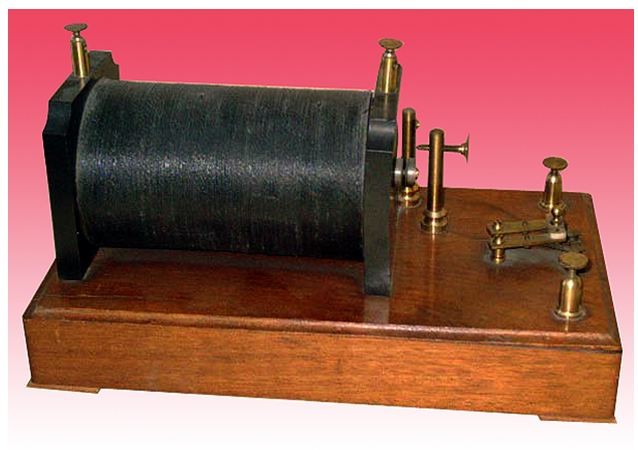Ruhmkorff's bobbin
Use
It permits to obtain very high differences of power (thousands of volts) from a power source of direct current.

Description
It is formed by two coils of copper wire of different section and length: the primary one P (few tens of turns of wire and a diameter of about a millimeter) and the secondary one S (tens of thousands of turns of wire and tenths of millimeter of diameter). Both are rolled on a common nucleus of sweet iron and covered with an isolating wrapping. The set is completed with a interrupter (A, K) and a condenser (C), and is powered by a battery (B).
Functioning
As the system is powered by direct current, It only works in a regular way if the primary circuit is opened and closed periodically, turning on the interrupter, which works according to a four-time-cycle:
- The primary circuit is closed when battery B is connected.
- A magnetic field is created and it attracts the metal piece A.
- When A is displaced from its position, the metal rod to which it is attached stops touching contact K, so the flux of current is interrupted and the magnetic field disappears.
- There no being a field which attracts it, A returns to its initial position and closes the primary circuit again.
The secondary circuit is open in the coil, so the current doesn´t flow trough it, unless the difference of power is so high that the air between the electrodes (G) is ionized. In this case a spark is produced and its lenght goes from some millimeters to a meter.
History
This machine was invented by Heinrich Daniel Ruhmkorff in 1850 approximately. He was a Parisian precision mechanic of German origin:
At the same time Charles Grafton Page, in the USA, and Antoine Philibert Masson, in France, had developed similar systems.












